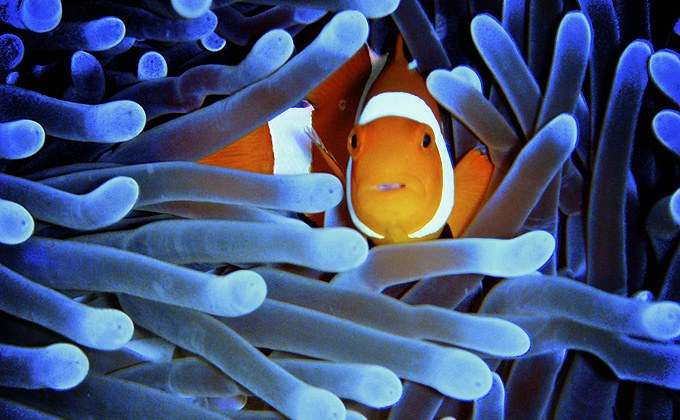8.2 was the average pH of seawater not long ago, but it’s now closer to 8.1 due increasing atmospheric CO2 causing ocean acidification. CO2 can concentrate in the bloodstream of reef fish, and they will eventually suffer the effects of hypercapnia due largely to inadequate respiration (not enough oxygen getting to their brains and organs). Fishes suffering from this malady show signs of disorientation and poor judgment; they lose their sense of direction and also become unreasonably emboldened, losing their healthy fear of predators. Essentially, they act drunk.
In reef fish, hypercarpnia begins to manifest effects as pH drops below 8.0. When pH dips below 7.8, which is the expected pH of seawater by 2100, a recent study predicts that up to half of marine fish will be affected by hypercapnia. While the idea of “drunk” fish sounds funny, it will cause serious and wide-ranging problems for aquatic ecosystems everywhere. A fish unable to navigate or detect predators will radically alter the the world’s oceans.
Drunk Tank
Many reefkeepers experience low pH in their tanks because of high indoor CO2 levels (common in homes) or the use of CaCO3 + CO2 reactors. Reefkeepers employing this form of calcium delivery often have tanks with pH ranging from 7.8 to 8.0. While captive fish don’t have to worry about predators or finding their way around great distances, they may still be perpetually tipsy from hypercapnia.
Raising pH to a more natural 8.1 to 8.3 is recommended. Aquarists can do this by simply opening windows to allow fresh air into the room, using CO2 air scrubbers, or trying to outgas CO2 from calcium reactors’ effluents through aeration or using a second calcium carbonate stage to utilize some of the excess CO2.











Thanks for a marvelous posting! I definitely enjoyed reading it, you may be a great author. Added your page to bookmarks, looking forward to the upcoming posts